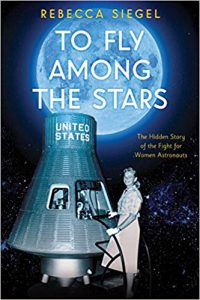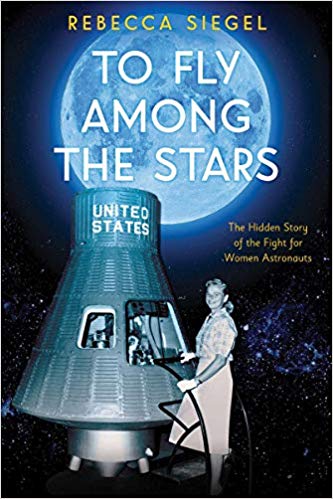 In 1943 in Wichita Falls, Texas, twelve-year-old Jerrie Cobb climbed, dipped, and banked in her father’s 1936 Waco biplane under her father’s guidance. These were precious times for Jerrie, since flying was in her blood. However, despite her talent and aptitude, Jerrie was denied a career as a jet pilot or an astronaut since she grew into adulthood during an era when flying was considered men’s work and society expected their women to be timid and beautiful.
In 1943 in Wichita Falls, Texas, twelve-year-old Jerrie Cobb climbed, dipped, and banked in her father’s 1936 Waco biplane under her father’s guidance. These were precious times for Jerrie, since flying was in her blood. However, despite her talent and aptitude, Jerrie was denied a career as a jet pilot or an astronaut since she grew into adulthood during an era when flying was considered men’s work and society expected their women to be timid and beautiful.
Because piloting a jet was physical, technical, dangerous, and dirty and because war maneuvers involved rough, rowdy, and ruthless work, women were excluded. While men scooped up the good gigs in combat flight, jet flight, and carrier-based flight, women aviators were left with the scraps.
Sexist judgments about a woman’s place or a man’s work didn’t deter the women who refused to hear the men-only message. Capable, driven, and competitive, they fought for the position of military test pilot, “the tip-top of the military pile, the bravest and fastest and best” (61).
Although gender bias is one focus of To Fly Among the Stars—with author Rebecca Siegel suggesting that to build a better world we need to replace the patchwork of lucky breaks and arbitrary advantages that determine success–Siegel’s nonfiction work also celebrates the space race and the contributions that both men and women played in aeronautics. Readers not only learn about the Mercury 7—the “magnificent men” who were selected by NASA for astronaut training—but about the Ninety Nines, the “ninety-nine women who were bold enough not only to be pilots but to seek out a community of like-minded adventurers” (5).
Readers also acquire knowledge about the Women Airforce Service Pilots (WASP), who often engaged in dangerous work that involved flight-testing planes that had just been repaired to ensure they were safe enough for combat. The story of the WASP is one of courage, and their legacy is crucial to understanding the role of women as aviators.
Women in the early sixties—when it wasn’t illegal to discriminate against them—weren’t just limited in their careers. They couldn’t attend most Ivy League colleges, they couldn’t apply for a credit card without the permission of their husbands, and they couldn’t get birth control without a parent’s or husband’s approval.
Not everyone in this era bought into the rhetoric about the gender divide. Dr. Randy Lovelace believed that women would make excellent astronauts, and with the support of Air Force Brigadier General Don Flickinger, Dr. Lovelace used his own resources to conduct the research to substantiate his claim. “Previous studies had shown that women fared better in isolation and small spaces than men. They also had fewer heart attacks than men. This suggested that they might make hardier, more resilient astronauts” (100-101). Even with science on their side, confirming women’s capability, the efforts of the many who believed in women’s potential for astronautics had no effect in persuading NASA.
In addition to the reading about all the big names in aeronautics during the fifties and sixties—men and women alike—Siegel shares details about the various tests and equipment used in training the astronauts for weightlessness, g-forces, and isolation: the Vomit Comet, the centrifuge, and the Multi-Axis Space Training Inertial Facility (MASTIF). John Glenn called the MASTIF “diabolically perfect.” It was a stomach-churning torture device.
Because we are all products of history and community, of opportunity and legacy and because our decisions are shaped by the choices available, reading Siegel’s book reminds us that we need to continue working against institutional sexism and notions of gender and racial exclusivity to ensure that more choices are available to more people.
- Posted by Donna

